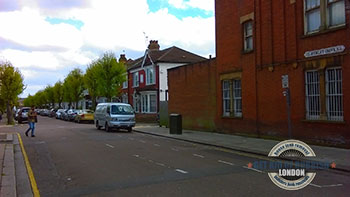North London is the area comprising the northern parts of London, England. It’s one of those boroughs whose boundaries are hard to define. Many people say the City of London is part of it. Others claim only areas to the north of the River Thames should be named North London. There are a few boroughs worth mentioning.
Barnet.
Barnet is the second largest London borough by population and the fourth in territory. It is a relatively new borough –formed in 1965. Interestingly enough initially there was no name for the new borough. It was supposed to be called Northgate or Northern Heights. Many people joke that the city council flipped a coin and that’s how Barnet was chosen. The population is mainly conservative and that explains the why all the MPs representing the area are from the Conservative party. Even though we say the community is conservative it has to be noted that when it comes to governing some fresh ideas have been adopted. The borough participated largely in forming the UK youth parliament and elected its own youth MPs in 2011.
is the second largest London borough by population and the fourth in territory. It is a relatively new borough –formed in 1965. Interestingly enough initially there was no name for the new borough. It was supposed to be called Northgate or Northern Heights. Many people joke that the city council flipped a coin and that’s how Barnet was chosen. The population is mainly conservative and that explains the why all the MPs representing the area are from the Conservative party. Even though we say the community is conservative it has to be noted that when it comes to governing some fresh ideas have been adopted. The borough participated largely in forming the UK youth parliament and elected its own youth MPs in 2011.
The northern parts of Barnet are mainly hilly and the middle ones are mostly rural. The southern parts however are more developed and more densely populated. Among the notable landmarks one could expect to find churches and museums some of which are listed as Grade 1 buildings. While there are a number of football clubs that call Barnet home, none of them play in any major divisions of English football. When it comes to rugby, however, it’s a whole different story – the Saracens are a Premiership team.
For two centuries the population of the area has grown from 6, 404 to over 300, 000. There are about 90 primary schools which is considered a high number according to usual UK standards.
Enfield.
And yet this is one more borough that was created in 1965. It was first populated in Roman times and is said to have been the place where Henry VII had his final sickness.
In the middle ages it became a well-known market town. Later is was turned into an industrial zone made popular by the arms factories that were established there. It is believed that the first mass produced dishwasher was created in Enfield.
Haringey.
The London Borough of Haringey is a right-on-the edge area that is a part of inner London or at least it’s thought to be according to some people. Others say it’s situated in Outer London. Regardless Haringey is a very intriguing place. It’s been founded relatively soon – in 1965 and puts together a very gaudy demographic. While it is a peaceful and relaxed area to live in there have been problems with poorer population. The life standard in the eastern parts is just low. But to the west other areas of Haringey such as Highgate and Crouch end are doing just fine and are actually blooming. Other problems concern children’s rights and well-being. After some dramatic accidents in recent years, the town council has taken precautions and the situation has improved significantly.
 It’s not only demographic that is divergent. Geographically the west side is elevated but as you go to the eastern parts the ground goes down and finally the land becomes just flat as it comes closeto the River Lea. About 25% of the total area is covered in parks and forests – it is a relatively “green’ borough. Haringey was initially a countryside area with rural grounds but in the middle of the 20th century as London grew, the borough actually became a “borough” of the UK’s capital city and has developed as an civic area since. With its 11.40 square miles (29.50 square kilometers) Haringey contains a number of districts.
It’s not only demographic that is divergent. Geographically the west side is elevated but as you go to the eastern parts the ground goes down and finally the land becomes just flat as it comes closeto the River Lea. About 25% of the total area is covered in parks and forests – it is a relatively “green’ borough. Haringey was initially a countryside area with rural grounds but in the middle of the 20th century as London grew, the borough actually became a “borough” of the UK’s capital city and has developed as an civic area since. With its 11.40 square miles (29.50 square kilometers) Haringey contains a number of districts.
Ah – West green. Here is a very pleasant and peaceful urban district. It’s mainly residential and has two very nice parks – Chestnuts and Downhills parks. At first it was a small village founded in 1393. During the 19th century and with the introduction of the railway West Green really blossomed and the rural area quickly became a large factory district. Change was rapid and very effective. This explains the strong presence of middle class population there today.
Tottenham is considered to be one of the oldest areas in the UK with its roots going all the way back to the Roman age. For years it has been a destination of choice for vacationing and leisure for rich people. This unfortunately is in contrast with some lethal incidents that happened in Tottenham during the last couple of centuries. The diverse demographic has been a source of disorder for many years and citizens in the N15 and N17 areas have complained about it regularly. There’s a history of organized crime and outburst of riots which is a shame because at the same time Tottenham is a very nice place that has a lot of history.
Hendon is a district in the borough of Barnet. As you probably expect it’s also an area with rich Roman heritage and there have been a number of archaeological excavations there. A number of churches are also present there and the oldest building of the neighborhood is the Church Farmhouse Museum. It will soon become part of the Middlesex University.
 Finchley also being an area in Burnet is calm suburban area that is built on a high ground ( a plateau). It became a borough a little earlier than others – in 1933. Even though there are a few interesting historical sites (churches, museums and universities) Finchley isn’t exactly a big tourist destination which could be for the better.
Finchley also being an area in Burnet is calm suburban area that is built on a high ground ( a plateau). It became a borough a little earlier than others – in 1933. Even though there are a few interesting historical sites (churches, museums and universities) Finchley isn’t exactly a big tourist destination which could be for the better.
Enfield Town as you might suspect is located in the borough of Enfield. It’s considered a major town in central London. Impressive things to visit here would be the Enfield Palace ( a manor from the 16th century), Enfield Market and the Enfield Fair.
Bulls Cross as part of the borough of Enfield has a few points of interest as well. Capel manor is a mansion with breathtaking gardens open to the public. Myddelton House and Pied Bull are also fascinating old houses to visit.
